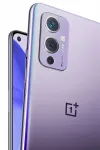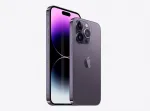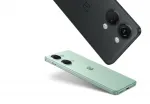The Nokia 2650 is a discontinued mobile device from Nokia, with specifications that make it a value-for-money product. With its minimal and sleek design, this device was launched in 2004, with only a Mini-SIM as its means of connectivity.
One of the most noticeable features of the Nokia 2650 is its lightweight design. Weighing at only 96 grams or 3.39 ounces, this device is considered one of the lightest mobile phones of its time. Its dimensions measure 85 x 46 x 23 mm, making it relatively small and easy to hold, with a volume of only 77 cubic centimeters (3.35 x 1.81 x 0.91 in). These measurements show that the Nokia 2650 is a compact device that can easily fit into any pocket or bag, making it convenient to carry around.
The Nokia 2650 comes in three color options - silver, red, and brown, giving users the freedom to choose based on their preferences. It also has a SAR (Specific Absorption Rate) value of 0.54 W/kg (head), which measures the rate at which the body absorbs radio frequency energy when using a mobile device. This shows that the Nokia 2650 is safe to use and compliant with safety standards.
In terms of connectivity, the Nokia 2650 does not have a USB port, WLAN, Bluetooth, or even a radio. It also does not have any positioning features, which may seem limiting compared to other mobile devices. However, it is important to note that these features were not commonly found in mobile phones during its time of release. This makes the Nokia 2650 a no-frills device, with the sole purpose of being a communication tool.
The Nokia 2650 also does not have a 3.5mm audio jack, making it unable to support earphones or headphones. However, it does have vibration abilities and downloadable polyphonic and monophonic ringtones, allowing users to customize their phone's ringtone. Additionally, it has no loudspeaker, which means all calls and messages need to be answered through the phone's earpiece.
The Nokia 2650 boasts a 4096 color display, which was considered impressive during its time, with a resolution of 128 x 128 pixels and a 1:1 ratio. This means that images and texts on the screen are of good quality and easy to read. It also has a 4-way navigation key, which is used to navigate through the phone's menu and functions.
For memory and storage, the Nokia 2650 does not have a card slot, limiting users to only 256 phonebook entries with 5 fields each and up to 10 dialed, received, and missed calls saved in the call records. However, it does support photo caller IDs, making it easier for users to identify and differentiate incoming calls. The battery is also non-removable, with a capacity of 760 mAh (BL-4C) that can last up to 300 hours on standby and up to 3 hours of talk time. This means that users can rely on the Nokia 2650 to be available for communication whenever needed.
The Nokia 2650 is a 2G mobile device, with support for GSM 900 / 1800 bands. It also has no EDGE (Enhanced Data Rates for GSM Evolution) connectivity and is only capable of Class 4 GPRS (General Packet Radio Service) data transfer. These may seem limited compared to current mobile devices, but during its release, this was considered standard for communication devices.
The Nokia 2650 has predictive text input, making it easier and faster to type messages. It also has Java support, specifically the MIDP 1.0 version, allowing users to download and enjoy basic Java games. Additionally, it has a WAP (Wireless Application Protocol) browser, specifically version 1.2.1, which means users can access web content through this device. It also supports XHTML, a markup language for web pages that combines the advantages of HTML and XML. Users can also enjoy downloadable games, further adding to the limited entertainment features of this device.
Overall, the Nokia 2650 may seem like a basic mobile device by today's standards. Still, during its release, it offered valuable features such as a compact and lightweight design, a good display, and essential communication functions. It was targeted towards users who preferred a simple and affordable communication device without any unnecessary features. With its easy-to-use interface and basic functions, the Nokia 2650 was a reliable choice for those looking for an uncomplicated and practical mobile device.









